Do you have a question about the Komatsu WA95-3 and is the answer not in the manual?
Explains the importance of the manual for safe and trouble-free operation, covering regulations and directives.
Covers safety regulations and directives relevant to machine operation and maintenance.
Defines the loader's intended purpose and standard working cycle.
Emphasizes reading and adhering to all safety notes and warnings in the manual and on the machine.
Provides instructions for transporting the machine over distances using loaders or wagons.
Details how to secure the articulated steering before lifting or repair.
Explains how to safely lift the machine, highlighting dangers and precautions.
Guides on safely driving the machine onto a transport vehicle, including ramp safety.
Outlines methods to secure the machine on a transport vehicle to prevent movement.
Instructions for removing securing devices after transport.
Provides technical data on dimensions, weights, and operating values of the machine.
Contains technical data related to the machine's specifications.
Covers fundamental safety instructions, devices, and personal protection measures.
Provides essential safety rules for operating and servicing the machine.
Emphasizes checking and maintaining safety devices and covers on the machine.
Details the emergency exit route from the driver's cab.
Advises on appropriate clothing and personal protective equipment for safe operation.
States Komatsu's liability regarding machine modifications.
Lists steps to follow before leaving the driver's seat for safety.
Provides instructions for safely mounting and dismounting the machine.
Details measures for preventing fires and actions to take during a fire.
Advises on protection against asbestos dust, though the machine is free of it.
Warns against inserting body parts into moving machine areas.
Addresses safety precautions when working with hot engine components and fluids.
Explains the function and importance of the ROPS for operator protection.
Describes the FOPS and its role in protecting against falling objects.
Advises on reading manuals and using approved attachments.
Provides safety guidelines for handling and working with the machine's battery.
Details essential checks to perform before starting the engine for safe operation.
Covers safety precautions related to the driver's cab environment.
Warns about dangers of intoxication during indoor operation without ventilation.
Addresses risks associated with operating in environments with flammable gases or dust.
Emphasizes clean windows, mirrors, and proper lighting for visibility.
Lists safety precautions for operating the machine.
Outlines safety rules to observe when reversing the machine.
Provides guidance on safe driving practices, including transport position.
Details safety measures and precautions for driving on slopes.
Explains the function and use of the emergency lowering system for the work unit.
Provides safety distances and procedures for working near overhead power lines.
Describes the process of loading material, including safety precautions.
Emphasizes maintaining good vision by using lights and stopping if visibility is poor.
Provides safety advice for operating the machine in snowy conditions.
Highlights the need to be aware of height limitations in areas like tunnels.
Explains the correct usage of brake pedals and engine braking.
Warns about operating near edges of hills and deep ditches due to soil instability.
Provides safety and operational guidance for using the forklift attachment.
Details procedures for safely parking the machine on level ground or slopes.
Outlines safe procedures for loading and unloading the machine.
Covers essential safety protocols and requirements for maintenance personnel.
Provides guidelines for checking tyres for damage, wear, and pressure.
Shows the location and types of safety and information labels on the machine.
Shows a general overview of the machine's main components.
Provides an overall view of all controls and indicators on the machine.
Details the layout and components of the instrument panel.
Lists and explains all warning lights on the instrument panel.
Explains the function of various control lamps on the instrument panel.
Details the fuel gauge, hour meter, and coolant temperature indicator.
Identifies and explains the function of various switches on the machine.
Identifies and describes the function of control levers and pedals.
Explains the function of the articulated steering catch.
Describes the use of the traction device for towing.
Details the function and safety precautions for using the socket.
Explains the mechanism for unlocking the doors.
Describes the function of the optional alarm horn for reverse driving.
Provides instructions and important points for the initial running-in period of a new machine.
Details daily visual checks and preparations before starting the machine.
Guides on adjusting the driver's seat for optimal comfort and safety.
Explains how to adjust the steering column for better ergonomics.
Details the procedure for adjusting the armrest height.
Provides guidance on adjusting rear-view mirrors for optimal visibility.
Explains how to adjust the heating and ventilation system for cabin comfort.
Details the steps for switching on and operating the air conditioning system.
Instructs on the correct procedure for putting on and using the safety belt.
Provides step-by-step instructions for starting and switching off the engine safely.
Outlines the steps for starting the machine and preparing for driving.
Details safety precautions for starting the machine on slopes.
Explains how to engage and disengage the high-speed gear safely.
Provides safety warnings and procedures for changing the machine's driving direction.
Offers tips and safety advice for driving the machine in reverse.
Explains safe turning practices, especially at high speeds or on slopes.
Explains the function of the service brake and parking brake.
Provides the correct procedure for stopping the machine safely.
Details how to safely park the machine when on a slope.
Offers advice for driving the machine over long distances, including tyre pressure checks.
Covers procedures for attaching and removing work units like buckets.
Offers advice on operating the machine to minimize tyre wear.
Guides on adjusting the bucket positioner for optimal digging angles.
Details the process of removing piled soil and excavation works.
Covers safe practices for transporting loads with the machine.
Explains safe procedures for dumping and unloading material.
Advises on proper bucket positioning for piling material.
Explains planing operations for ground levelling.
Explains prospecting operations for wearing off topsoil.
Provides safety and operational guidance for using the forklift attachment.
Covers safety measures for operating in specific environments like water or slopes.
Details preparatory measures for trouble-free winter operation.
Lists actions for machine shutdown, storage maintenance, and retrieval.
General introduction to troubleshooting the machine and locating fault tables.
Lists troubleshooting tables for warning lights and indicators.
Provides troubleshooting steps for electrical system faults.
Offers solutions for common engine-related faults.
Details troubleshooting for hydrostatic and work hydraulic systems.
Covers troubleshooting for service and parking brakes.
Addresses issues related to steering reactions and wobbling.
Provides troubleshooting for axle noise.
Addresses issues related to the driver's cab, such as insufficient airflow.
Explains steering capabilities when the engine breaks down.
Details the use of the emergency lowering system for the work unit.
Guides on safely starting the engine using jumper cables.
Provides instructions and warnings for towing the machine.
Details safety measures for towing a machine with faulty brakes.
Describes how to check the parking brake and service brake effectiveness.
Covers fundamental principles and preparations for maintenance work.
Provides instructions for cleaning the machine and safety precautions.
Details maintenance adjustments based on working environment (muddy, dusty).
Lists required lubricants, operating agents, and their specifications.
Provides guidance on fuel types, storage, and handling.
Explains the proper preparation, use, and properties of coolants.
Details safety-related parts that require regular replacement.
Lists essential spare parts and their replacement intervals.
Covers maintenance aspects of the electrical system, including fuses.
Provides guidelines for checking tyres for damage, wear, and pressure.
Lists essential tools for maintenance and repair.
Provides torque values for tightening nuts and bolts.
Outlines the maintenance schedule based on operating hours.
Lists checks and procedures to perform before starting machine operations.
Explains how to check and top up engine oil.
Provides steps for draining engine oil.
Guides on checking fuel level and refueling safely.
Details checks for all control indicators and alarms before starting.
Advises on checking electrical connections for tightness.
Explains how to check the air flow from the heater/AC system.
Lists additional checks before starting operation.
Outlines maintenance tasks that are performed as needed.
Provides steps for checking the air conditioning system.
Lists maintenance tasks to be performed every 10 operating hours.
Details lubrication points and procedures.
Lists maintenance tasks to be performed every 50 operating hours.
Guides on checking coolant levels in the radiator and expansion tank.
Explains how to drain water and dirt from the fuel tank.
Details checking the service brake oil level and refilling.
Guides on checking the battery and its acid level.
Explains how to recharge the machine's battery.
Details lubrication points on the work unit.
Lists maintenance tasks for every 100 operating hours.
Explains how to drain the water separator.
Lists maintenance tasks for every 250 operating hours.
Refers to procedure for changing engine oil and filter.
Refers to procedure for checking V-belt condition.
Refers to procedure for adjusting V-belt tension.
Guides on checking oil levels in front and rear axles.
Details procedures for air filter maintenance, including cleaning.
Explains how to clean radiator segments.
Details lubrication points on steering cylinders and shafts.
Lists maintenance tasks for every 500 operating hours.
Details how to change the fuel filter and element.
Explains how to purge the fuel system after filter replacement.
Refers to procedure for changing hydraulic filter cartridge.
Details how to clean the water separator.
Details lubrication points for door and bonnet hinges.
Guides on checking and refilling transfer box oil.
Details replacing air filter inserts and safety filters.
Explains cleaning or replacing heater/AC filter fleece and condenser.
Advises checking ALS-accumulator gas pressure via dealer.
Lists maintenance tasks for every 1000 operating hours.
Details exchanging coolant and cleaning the cooling system.
Refers to procedure for front axle oil change.
Refers to procedure for rear axle oil change.
Refers to procedure for transfer box gearing oil change.
Notes that brake system repairs must be done by authorized garages.
Notes that brake system repairs must be done by authorized garages.
Notes that valve play adjustment requires an authorized garage.
Notes that nozzle checks require an authorized garage.
Advises checking accumulator gas pressure via dealer.
Lists maintenance tasks for every 2000 operating hours.
Details the procedure for changing hydraulic system oil.
Explains how to ventilate the hydraulic oil tank.
Guides on checking the antifreeze content of the coolant.
Notes that cooling system checks require an authorized garage.
Notes that fuel pump checks require an authorized garage.
Notes that tube checks/replacements require an authorized garage.
Notes that water pump checks require an authorized garage.
Notes that fuel injection checks require an authorized garage.
Provides detailed technical specifications for the machine's engine and driving systems.
Details the machine's noise emission levels as per EC directive.
Provides information on vibration levels transmitted to the operator.
Outlines the maximum permissible slope angles for safe operation.
Introduces the ALS-Electronics system and its functioning principle.
Explains how the ALS-Electronics system absorbs vibrations for a smoother ride.
Warns about potential movement of attachments when ALS system is active.
Details the preconditions and steps for switching on the ALS-Electronics.
Provides crucial safety warnings for handling the pressure accumulator.
Explains the importance of the manual for safe and trouble-free operation, covering regulations and directives.
Covers safety regulations and directives relevant to machine operation and maintenance.
Defines the loader's intended purpose and standard working cycle.
Emphasizes reading and adhering to all safety notes and warnings in the manual and on the machine.
Provides instructions for transporting the machine over distances using loaders or wagons.
Details how to secure the articulated steering before lifting or repair.
Explains how to safely lift the machine, highlighting dangers and precautions.
Guides on safely driving the machine onto a transport vehicle, including ramp safety.
Outlines methods to secure the machine on a transport vehicle to prevent movement.
Instructions for removing securing devices after transport.
Provides technical data on dimensions, weights, and operating values of the machine.
Contains technical data related to the machine's specifications.
Covers fundamental safety instructions, devices, and personal protection measures.
Provides essential safety rules for operating and servicing the machine.
Emphasizes checking and maintaining safety devices and covers on the machine.
Details the emergency exit route from the driver's cab.
Advises on appropriate clothing and personal protective equipment for safe operation.
States Komatsu's liability regarding machine modifications.
Lists steps to follow before leaving the driver's seat for safety.
Provides instructions for safely mounting and dismounting the machine.
Details measures for preventing fires and actions to take during a fire.
Advises on protection against asbestos dust, though the machine is free of it.
Warns against inserting body parts into moving machine areas.
Addresses safety precautions when working with hot engine components and fluids.
Explains the function and importance of the ROPS for operator protection.
Describes the FOPS and its role in protecting against falling objects.
Advises on reading manuals and using approved attachments.
Provides safety guidelines for handling and working with the machine's battery.
Details essential checks to perform before starting the engine for safe operation.
Covers safety precautions related to the driver's cab environment.
Warns about dangers of intoxication during indoor operation without ventilation.
Addresses risks associated with operating in environments with flammable gases or dust.
Emphasizes clean windows, mirrors, and proper lighting for visibility.
Lists safety precautions for operating the machine.
Outlines safety rules to observe when reversing the machine.
Provides guidance on safe driving practices, including transport position.
Details safety measures and precautions for driving on slopes.
Explains the function and use of the emergency lowering system for the work unit.
Provides safety distances and procedures for working near overhead power lines.
Describes the process of loading material, including safety precautions.
Emphasizes maintaining good vision by using lights and stopping if visibility is poor.
Provides safety advice for operating the machine in snowy conditions.
Highlights the need to be aware of height limitations in areas like tunnels.
Explains the correct usage of brake pedals and engine braking.
Warns about operating near edges of hills and deep ditches due to soil instability.
Provides safety and operational guidance for using the forklift attachment.
Details procedures for safely parking the machine on level ground or slopes.
Outlines safe procedures for loading and unloading the machine.
Covers essential safety protocols and requirements for maintenance personnel.
Provides guidelines for checking tyres for damage, wear, and pressure.
Shows the location and types of safety and information labels on the machine.
Shows a general overview of the machine's main components.
Provides an overall view of all controls and indicators on the machine.
Details the layout and components of the instrument panel.
Lists and explains all warning lights on the instrument panel.
Explains the function of various control lamps on the instrument panel.
Details the fuel gauge, hour meter, and coolant temperature indicator.
Identifies and explains the function of various switches on the machine.
Identifies and describes the function of control levers and pedals.
Explains the function of the articulated steering catch.
Describes the use of the traction device for towing.
Details the function and safety precautions for using the socket.
Explains the mechanism for unlocking the doors.
Describes the function of the optional alarm horn for reverse driving.
Provides instructions and important points for the initial running-in period of a new machine.
Details daily visual checks and preparations before starting the machine.
Guides on adjusting the driver's seat for optimal comfort and safety.
Explains how to adjust the steering column for better ergonomics.
Details the procedure for adjusting the armrest height.
Provides guidance on adjusting rear-view mirrors for optimal visibility.
Explains how to adjust the heating and ventilation system for cabin comfort.
Details the steps for switching on and operating the air conditioning system.
Instructs on the correct procedure for putting on and using the safety belt.
Provides step-by-step instructions for starting and switching off the engine safely.
Outlines the steps for starting the machine and preparing for driving.
Details safety precautions for starting the machine on slopes.
Explains how to engage and disengage the high-speed gear safely.
Provides safety warnings and procedures for changing the machine's driving direction.
Offers tips and safety advice for driving the machine in reverse.
Explains safe turning practices, especially at high speeds or on slopes.
Explains the function of the service brake and parking brake.
Provides the correct procedure for stopping the machine safely.
Details how to safely park the machine when on a slope.
Offers advice for driving the machine over long distances, including tyre pressure checks.
Covers procedures for attaching and removing work units like buckets.
Offers advice on operating the machine to minimize tyre wear.
Guides on adjusting the bucket positioner for optimal digging angles.
Details the process of removing piled soil and excavation works.
Covers safe practices for transporting loads with the machine.
Explains safe procedures for dumping and unloading material.
Advises on proper bucket positioning for piling material.
Explains planing operations for ground levelling.
Explains prospecting operations for wearing off topsoil.
Provides safety and operational guidance for using the forklift attachment.
Covers safety measures for operating in specific environments like water or slopes.
Details preparatory measures for trouble-free winter operation.
Lists actions for machine shutdown, storage maintenance, and retrieval.
General introduction to troubleshooting the machine and locating fault tables.
Lists troubleshooting tables for warning lights and indicators.
Provides troubleshooting steps for electrical system faults.
Offers solutions for common engine-related faults.
Details troubleshooting for hydrostatic and work hydraulic systems.
Covers troubleshooting for service and parking brakes.
Addresses issues related to steering reactions and wobbling.
Provides troubleshooting for axle noise.
Addresses issues related to the driver's cab, such as insufficient airflow.
Explains steering capabilities when the engine breaks down.
Details the use of the emergency lowering system for the work unit.
Guides on safely starting the engine using jumper cables.
Provides instructions and warnings for towing the machine.
Details safety measures for towing a machine with faulty brakes.
Describes how to check the parking brake and service brake effectiveness.
Covers fundamental principles and preparations for maintenance work.
Provides instructions for cleaning the machine and safety precautions.
Details maintenance adjustments based on working environment (muddy, dusty).
Lists required lubricants, operating agents, and their specifications.
Provides guidance on fuel types, storage, and handling.
Explains the proper preparation, use, and properties of coolants.
Details safety-related parts that require regular replacement.
Lists essential spare parts and their replacement intervals.
Covers maintenance aspects of the electrical system, including fuses.
Provides guidelines for checking tyres for damage, wear, and pressure.
Lists essential tools for maintenance and repair.
Provides torque values for tightening nuts and bolts.
Outlines the maintenance schedule based on operating hours.
Lists checks and procedures to perform before starting machine operations.
Explains how to check and top up engine oil.
Provides steps for draining engine oil.
Guides on checking fuel level and refueling safely.
Details checks for all control indicators and alarms before starting.
Advises on checking electrical connections for tightness.
Explains how to check the air flow from the heater/AC system.
Lists additional checks before starting operation.
Outlines maintenance tasks that are performed as needed.
Provides steps for checking the air conditioning system.
Lists maintenance tasks to be performed every 10 operating hours.
Details lubrication points and procedures.
Lists maintenance tasks to be performed every 50 operating hours.
Guides on checking coolant levels in the radiator and expansion tank.
Explains how to drain water and dirt from the fuel tank.
Details checking the service brake oil level and refilling.
Guides on checking the battery and its acid level.
Explains how to recharge the machine's battery.
Details lubrication points on the work unit.
Lists maintenance tasks for every 100 operating hours.
Explains how to drain the water separator.
Lists maintenance tasks for every 250 operating hours.
Refers to procedure for changing engine oil and filter.
Refers to procedure for checking V-belt condition.
Refers to procedure for adjusting V-belt tension.
Guides on checking oil levels in front and rear axles.
Details procedures for air filter maintenance, including cleaning.
Explains how to clean radiator segments.
Details lubrication points on steering cylinders and shafts.
Lists maintenance tasks for every 500 operating hours.
Details how to change the fuel filter and element.
Explains how to purge the fuel system after filter replacement.
Refers to procedure for changing hydraulic filter cartridge.
Details how to clean the water separator.
Details lubrication points for door and bonnet hinges.
Guides on checking and refilling transfer box oil.
Details replacing air filter inserts and safety filters.
Explains cleaning or replacing heater/AC filter fleece and condenser.
Advises checking ALS-accumulator gas pressure via dealer.
Lists maintenance tasks for every 1000 operating hours.
Details exchanging coolant and cleaning the cooling system.
Refers to procedure for front axle oil change.
Refers to procedure for rear axle oil change.
Refers to procedure for transfer box gearing oil change.
Notes that brake system repairs must be done by authorized garages.
Notes that brake system repairs must be done by authorized garages.
Notes that valve play adjustment requires an authorized garage.
Notes that nozzle checks require an authorized garage.
Advises checking accumulator gas pressure via dealer.
Lists maintenance tasks for every 2000 operating hours.
Details the procedure for changing hydraulic system oil.
Explains how to ventilate the hydraulic oil tank.
Guides on checking the antifreeze content of the coolant.
Notes that cooling system checks require an authorized garage.
Notes that fuel pump checks require an authorized garage.
Notes that tube checks/replacements require an authorized garage.
Notes that water pump checks require an authorized garage.
Notes that fuel injection checks require an authorized garage.
Provides detailed technical specifications for the machine's engine and driving systems.
Details the machine's noise emission levels as per EC directive.
Provides information on vibration levels transmitted to the operator.
Outlines the maximum permissible slope angles for safe operation.
Introduces the ALS-Electronics system and its functioning principle.
Explains how the ALS-Electronics system absorbs vibrations for a smoother ride.
Warns about potential movement of attachments when ALS system is active.
Details the preconditions and steps for switching on the ALS-Electronics.
Provides crucial safety warnings for handling the pressure accumulator.
| Engine Power | 55.4 kW |
|---|---|
| Net Horsepower | 75 HP |
| Travel Speed | 30 km/h |
| Overall Width | 2.05 m |
| Ground Clearance | 300 mm |
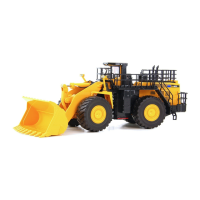
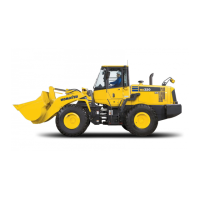


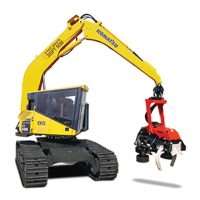

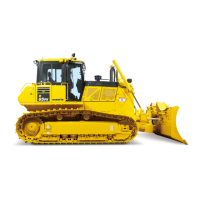
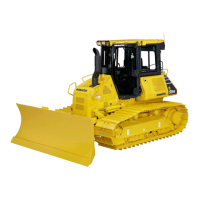
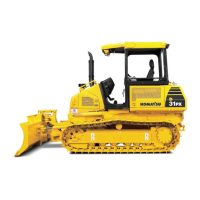


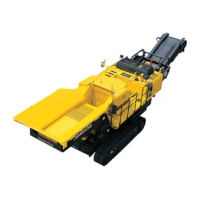
